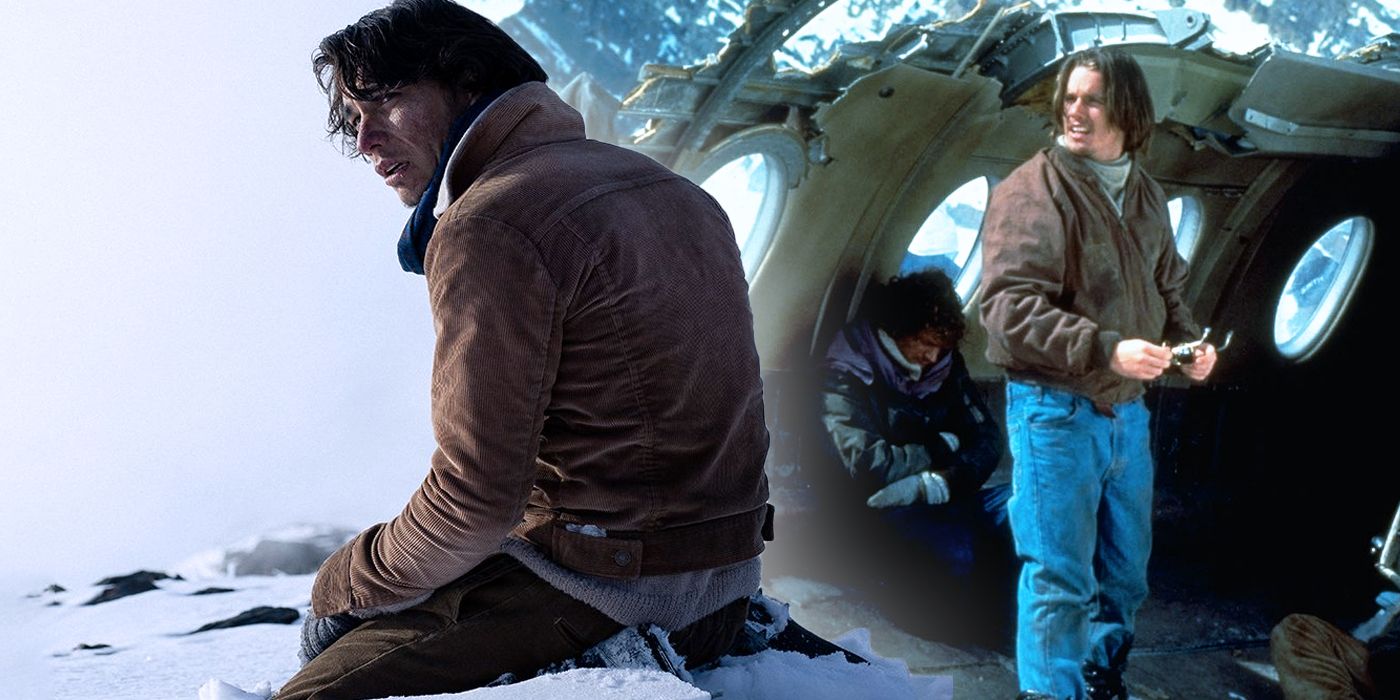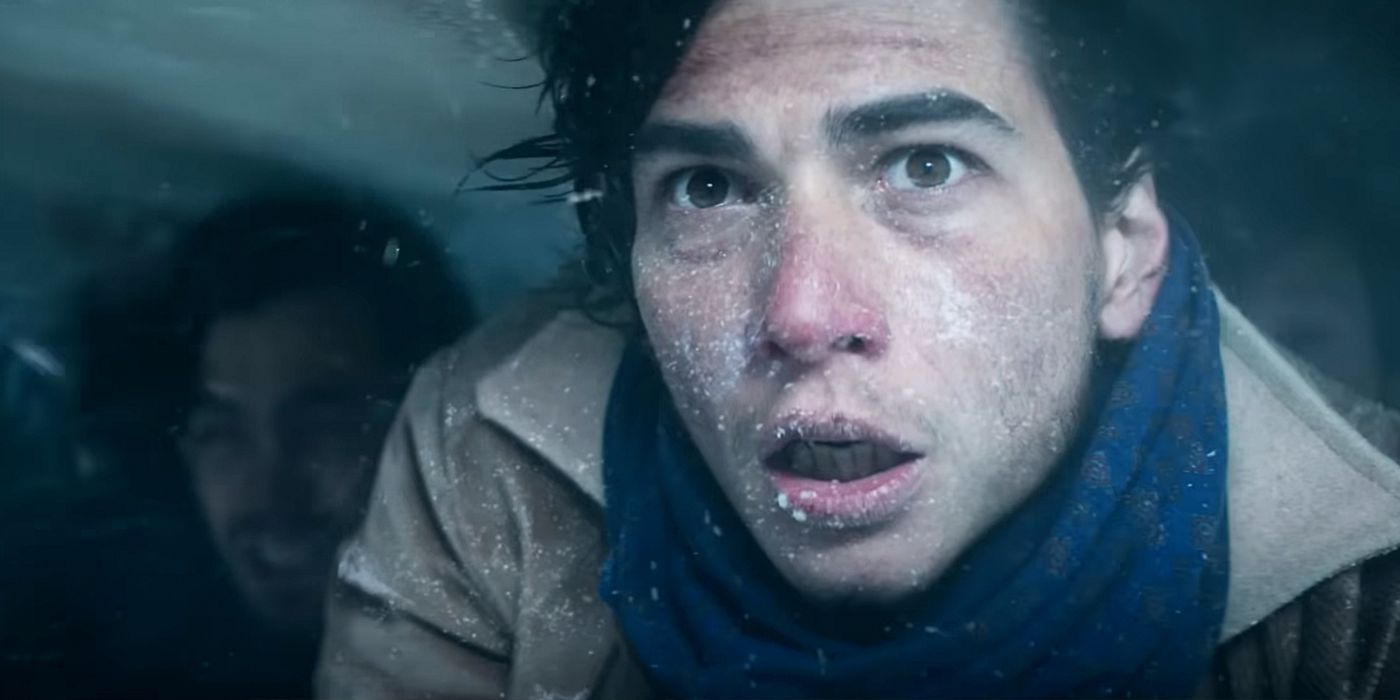
Chris Hemsworth and Tom Holland star in the gripping 2015 survival film, In the Heart of the Sea, which has recently regained attention on Netflix. This poignant tale is centered around a catastrophic event—the 1820 sinking of the whaling ship Essex—and its impact on the survivors, who faced harrowing decisions to stay alive. The film offers a unique narrative that also serves as a backdrop for Herman Melville’s renowned novel, Moby Dick.
Released on Netflix on January 1, 2025, In the Heart of the Sea has reignited interest a decade after its initial debut. Despite its talented cast and direction, the film struggled with critical reception in 2015, maintaining a modest score of 42% on Rotten Tomatoes. It also failed at the box office, grossing just $94.3 million against a reported budget of $100 million (source: Box Office Mojo). Nevertheless, the story’s deep exploration of survival and tragedy makes it resonate, paralleling Netflix’s upcoming 2024 film, Society of the Snow.
Netflix’s Society of the Snow: A Parallel Survival Story
A Shared Narrative of Survival

Premiering in limited theaters on December 22, 2023, followed by its wide release on Netflix on January 4, 2024, Society of the Snow recounts another disaster, this time set in the frigid Andes mountains. Though one story unfolds at sea and the other high in the mountains, both narratives depict the incredible lengths to which survivors are driven. In each case, individuals must confront the brutal elements, battle to preserve their lives, seek rescue, and make gut-wrenching decisions about sustenance to endure.
In In the Heart of the Sea, the survivors of the Essex shipwreck were forced into three smaller boats, where many succumbed to starvation, illness, or injury. The dire situation led them to resort to cannibalism; one soul even volunteered to sacrifice himself for the others. Similarly, in Society of the Snow, the aftermath of a plane crash left survivors stranded with minimal supplies, battling extreme cold, and faced with life-threatening conditions. They too faced devastating losses, ultimately resorting to cannibalistic survival tactics until their eventual rescue.
Both films illustrate the heart-wrenching duration of survival: the Essex sank in November 1820 with survivors not rescued until late February 1821—about three grueling months. Comparatively, Uruguayan Air Force Flight 571 crashed on October 13, 1972, with survivors enduring a similar plight until their rescue on December 23 of that year. The statistics of these tragedies underline the gravity of the human experience during such desperate times.
|
Film |
Event Depicted |
Those Aboard |
Survivors |
|---|---|---|---|
|
In the Heart of the Sea (2015) |
1820 Essex sinking |
20 |
8 |
|
Society of the Snow (2024) |
1972 Andes flight disaster |
45 |
16 |
The staggering death tolls in these real-life events reveal the severity of their circumstances. In the Essex disaster, only eight of the twenty crew members survived. Meanwhile, in the Andes crash, out of 45 people onboard, just 16 managed to escape the unforgiving terrain. Miraculously, the survival of any individuals after enduring such life-threatening ordeals provides a powerful emotional conclusion to both films.
Inspirations Behind Society of the Snow & In the Heart of the Sea
How Historical Events Have Influenced Media

Long before the releases of Society of the Snow and In the Heart of the Sea, the harrowing tales of these true disasters found their way into various media forms. The Andes flight disaster, for instance, inspired the 1993 film Alive and left a mark on the 2021 series Yellowjackets. Alternatively, In the Heart of the Sea is rooted deep within literary history, significantly influencing Herman Melville’s classic novel, Moby Dick, published in 1851, which has seen numerous adaptations over the years.
While previous interpretations of these survival stories usually took creative liberties, In the Heart of the Sea and Society of the Snow present more direct adaptations of the events themselves, allowing audiences to connect more authentically with the original accounts behind the dramatizations.
Historical Accuracy: A Comparison
Society of the Snow vs. In the Heart of the Sea: Accuracy in Storytelling

Upon its release, Society of the Snow garnered praise for its authenticity, compelling performances, and effective storytelling that closely mirrors the actual events. Adapted from the 2009 nonfiction account by Pablo Vierci, this film’s development involved extensive research and interviews with real-life survivors. Director J. A. Bayona conducted over 100 hours of discussions with these individuals, adding to the narrative’s authenticity (source: THR).
With many of the survivors still alive, the filmmakers had access to a wealth of firsthand accounts, enabling a more truthful portrayal of their harrowing experience. Bayona’s careful approach is evident as he reported that screenings for the survivors resulted in positive feedback. While some details were adjusted for dramatization, the core events remained intact, preserving the integrity of their story.
In contrast, In the Heart of the Sea maintains a general adherence to historical accuracy but includes more dramatization than its counterpart. For example, Herman Melville’s interactions with Thomas Nickerson, a key character in the film, are fictional, as historical records show they never met. Additionally, alterations regarding the circumstances surrounding Matthew Joy’s death emphasize injury over an existing health issue, creating narrative tension not present in the original account.
In conclusion, while both films attempt to chronicle harrowing true events, Society of the Snow benefits from modern resources and survivor input, resulting in a more accurate depiction, while In the Heart of the Sea draws from older accounts, leaving room for creative interpretation.
Sources: Box Office Mojo, Rotten Tomatoes, The Hollywood Reporter




Leave a Reply